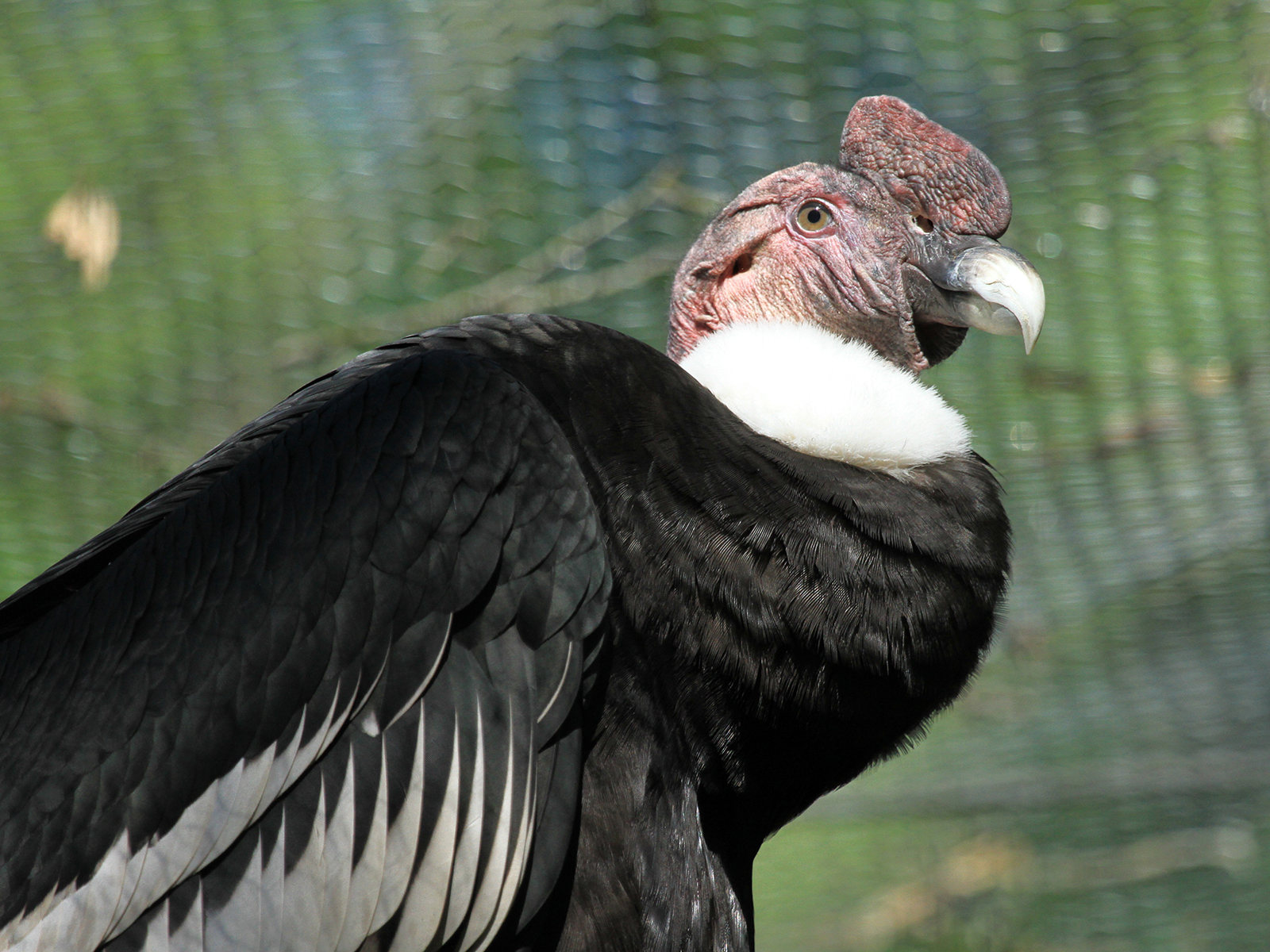Andean Condor
Vultur gryphus
Class
Aves
Order
Cathartiformes
Family
Cathartidae
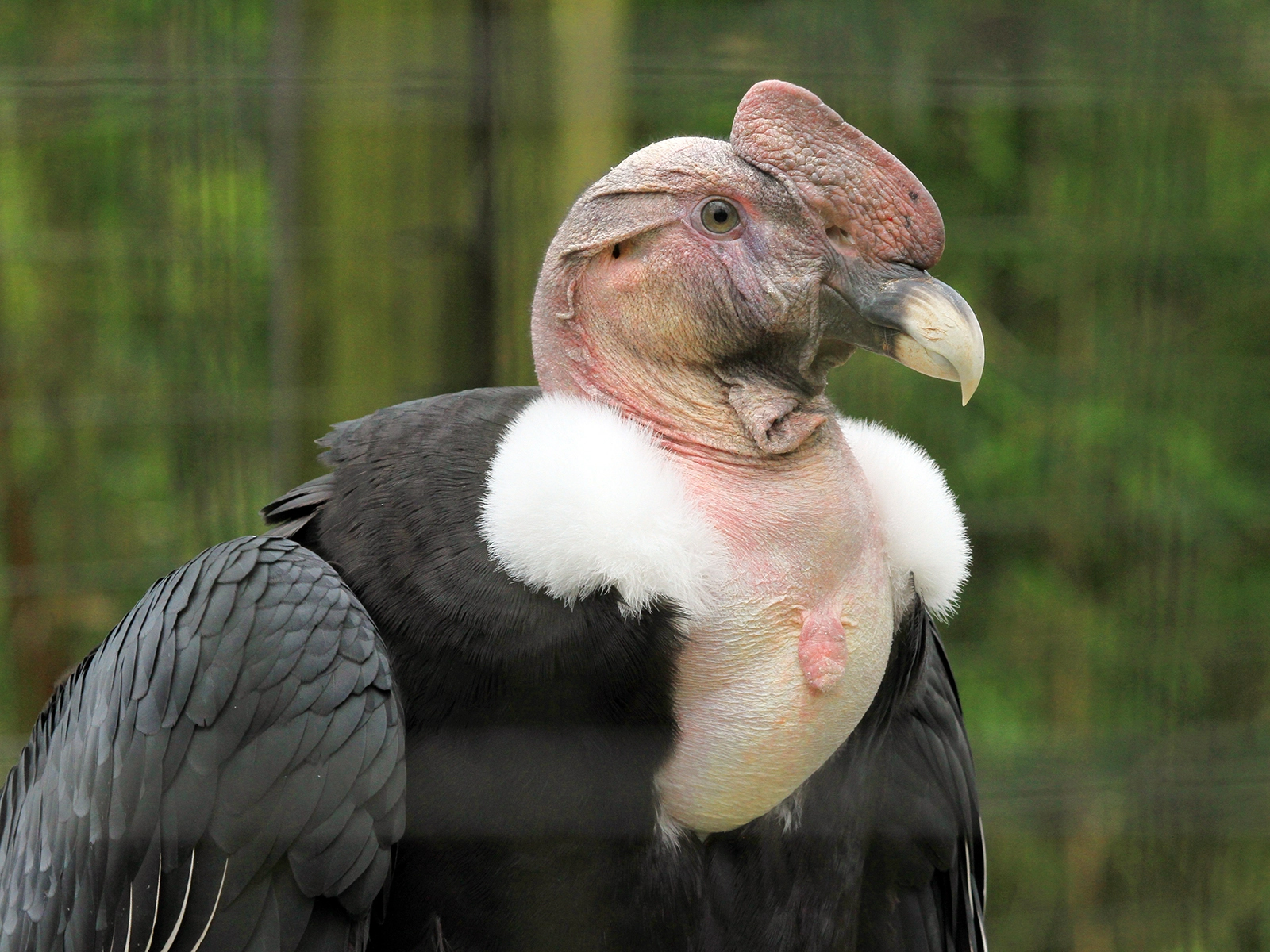
Aves
Cathartiformes
Cathartidae
Andes Mountains in South America, from Venezuela to Tierra del Fuego, descending to sea level in Peru and Chile
Length: 3.2 - 4.2 ft
Wingspan: Up to 10.5 ft
Weight: Male 24 - 33 lbs; Female 17 - 24 lbs
High mountains over open grasslands and alpine regions, lowland desert regions, and plains
Cluch of 1 egg
Gestation: 56 - 62 days
Carrion (dead animals)
Vulnerable
Andean condors soar to heights of 18,000 feet, or almost 3.4 miles.
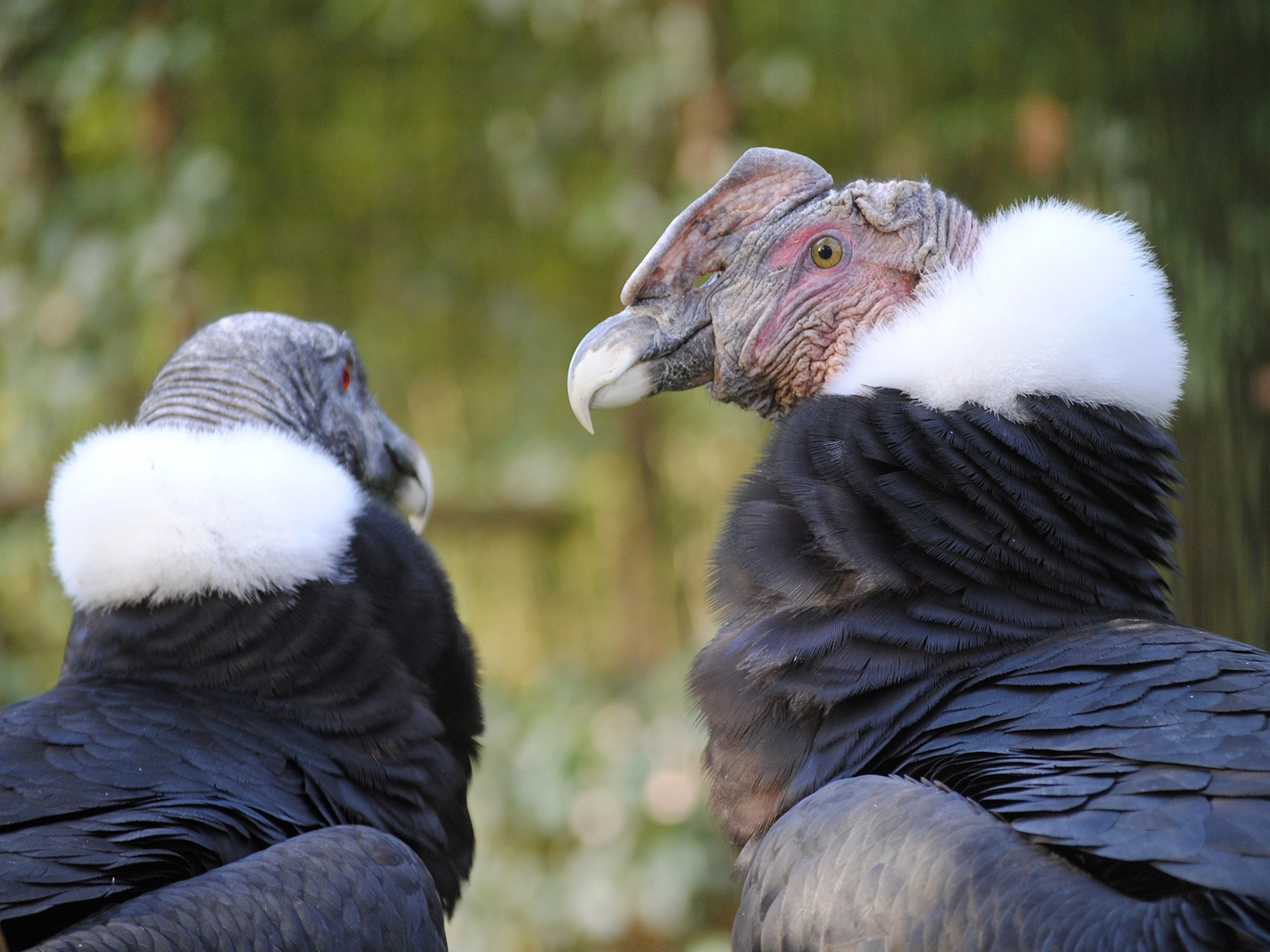
The male has a very distinctive comb on the crown of the head and has yellow eyes. Females have bright red eyes. Andean condors lack of feathers on its head, allowing them to radiate heat away from the body which keeps the birds from overheating.
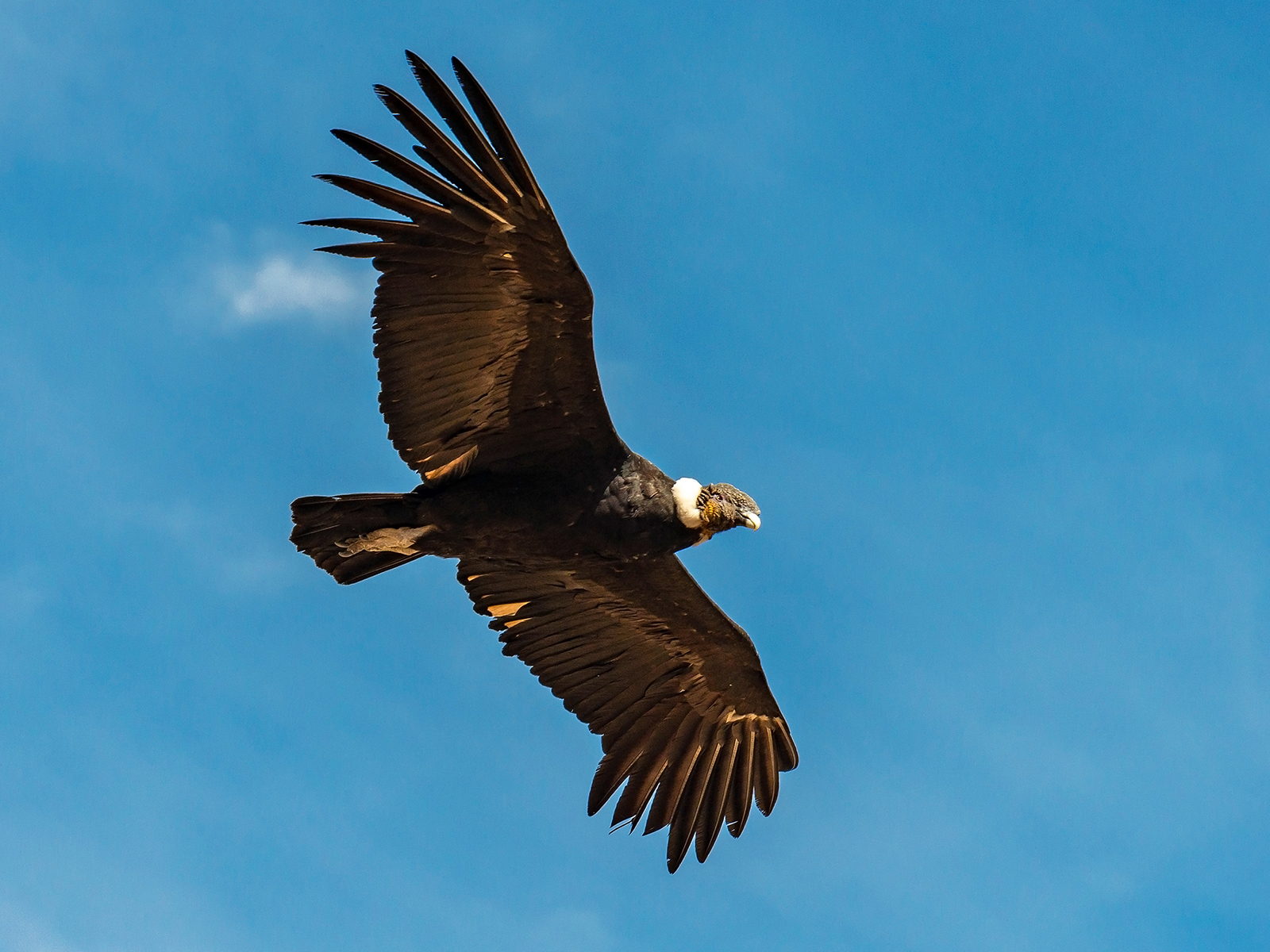
To conserve energy on these long flights, condors make good use of rising hot air currents called "thermals" to keep them aloft and reduce the need to flap their wings. Feathers on their wingtips allow them to make fine adjustments to their flight path.
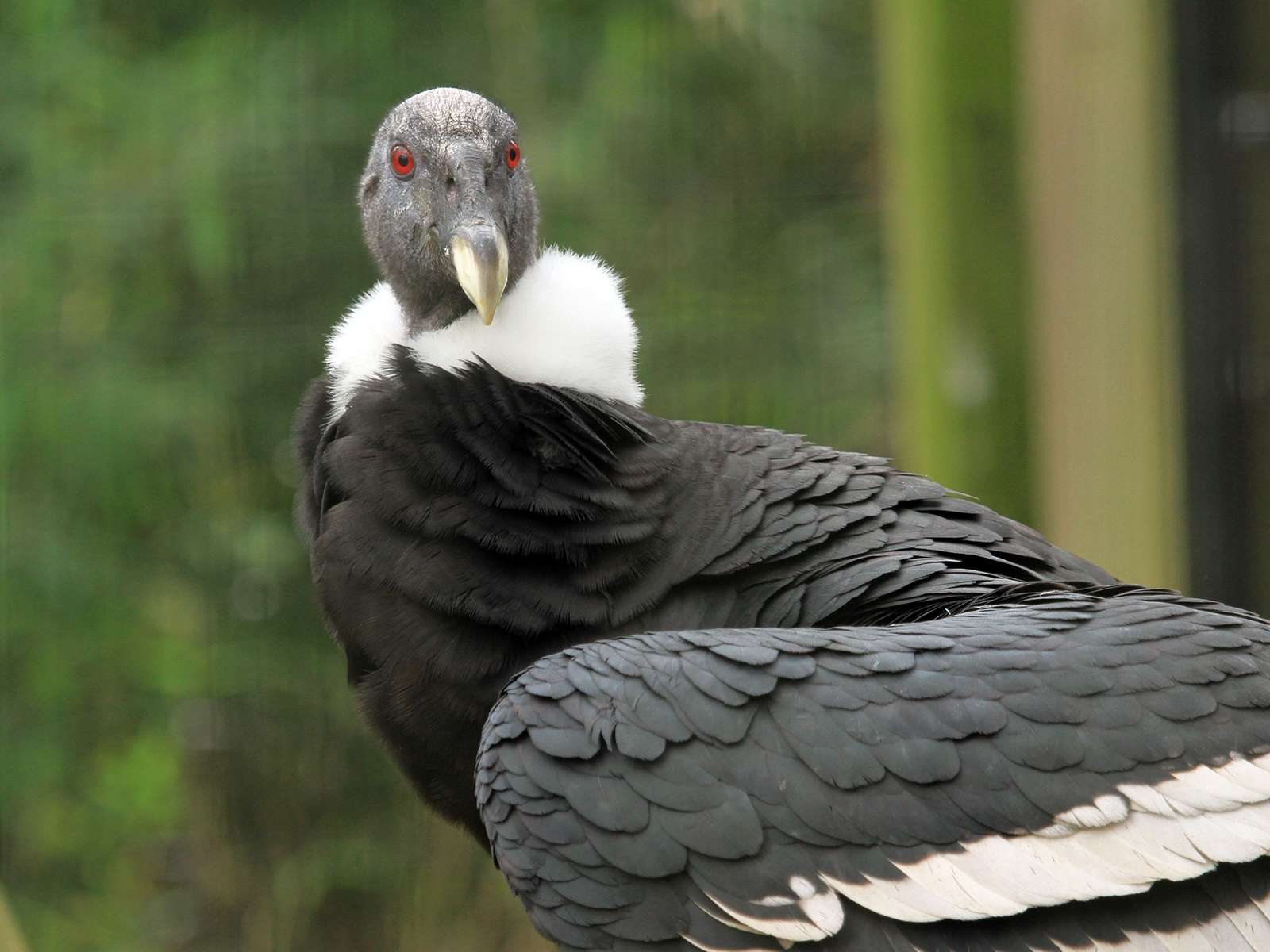
Condors lack a syrinx, or vocal organ, and cannot call or sing like other birds. Instead, they make soft sounds including hisses and grunts to communicate with one another.
These birds are threatened over most of their habitat. One contributing factor is due to local customs and traditions involving the use of bones and organs from the condor. Their low reproductive output makes them vulnerable to persecution by humans who believe they are a threat to their livestock.
Cielito: Hatched July 19, 1986
